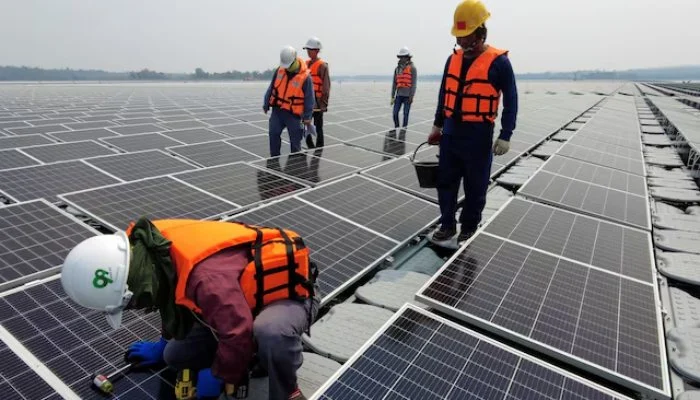The traditional 200-year-old public utility model, which delivers centrally generated power to consumers, is facing a significant challenge from the burgeoning rise of rooftop solar. This transformative shift is particularly evident in Pakistan, which notably became the world’s third-largest importer of Chinese solar panels last year.
While this surge in solar power offers a welcome and cleaner alternative to expensive diesel generators and high-cost coal contracts in Pakistan, it is simultaneously creating a complex problem for the national grid, as reported by The Economist. As an increasing number of businesses and homes generate their own electricity, the fixed costs associated with maintaining the grid and paying for conventional power sources are being distributed among a shrinking pool of remaining customers. This dynamic drives up prices for these customers, inadvertently incentivizing even further disconnections from the grid.
This trend is not unique to Pakistan; it is a global phenomenon. South Africa’s state-owned energy firm Eskom has inadvertently fueled a solar boom due to frequent “load shedding,” leading to significant financial strain on municipal governments. These municipal governments are compelled to purchase increasingly expensive power from Eskom to sell to consumers. By November, they had accumulated unpaid bills totaling $5 billion, or 1.2% of GDP, with the firm. Additionally, Lebanon has witnessed a dramatic increase in solar installations since 2019, with wealthier neighborhoods in Beirut now visibly covered in panels as state power generation remains severely limited. Even in the United States, elevated energy prices and blackouts are prompting some to explore off-grid solutions, including solar panels, batteries, and diesel generators, with the cost of such systems declining by approximately 9% annually.
For optimists, these trends evoke a vision directly from the green movement of the 1970s, when energy analyst Amory Lovins coined the term “soft energy path” to describe a future where power would be renewable, decentralized, and small-scale. “An affluent industrial economy could advantageously operate with no central power stations at all,” he famously wrote.
While optimists perceive this as a definitive move toward a decentralized, renewable energy future, significant challenges persist. Large-scale solar farms generally demonstrate greater efficiency than individual rooftop systems due to economies of scale. Moreover, the substantial upfront cost of solar often restricts its accessibility to the wealthy, thereby exacerbating existing energy inequality.
In Pakistan, this dynamic means that poorer citizens bear a disproportionately greater burden of grid costs. In Lebanon, a lack of regulation has led to a market flooded with low-quality, unreliable solar systems. According to Jessica Obeid of the Middle East Institute, this regulatory void has effectively turned Lebanon into “a dumpster of low-quality solar systems and batteries.”
Policymakers are now actively seeking solutions to effectively integrate solar into existing grids. “You can make solar play nice with the grids,” remarked Jenny Chase of BloombergNEF, a prominent research firm.
In Pakistan, the issue is compounded by high-cost coal power contracts and a billing system that does not adequately adapt to fluctuating demand, as noted by The Economist. Many solar users still rely on the grid as a backup, effectively “free-riding” on artificially cheap power when their panels are not generating. Eliminating current incentives like “net metering” could potentially help distribute grid maintenance costs more equitably.
Ultimately, the most effective solution may involve energy firms adapting to this new, competitive landscape. While decentralized energy production presents disruptive challenges, it also compels providers to innovate and improve their services. Rooftop solar has undeniably emerged as a powerful alternative, fundamentally challenging the long-held concept of a natural monopoly in energy supply.



